Mary Anne Yarde's Blog: The Coffee Pot Book Club , page 99
March 12, 2020
Join author, Barbara Spencer, how history inspired her writing. #mustread #Fantasy @BarbaraSpencerO

Life in the time of…By Barbara Spencer
Every author imagines life in another time – most in connection with a book they are currently writing. My brother’s favourite period of history is the 1930s; not sure about mine. I think the 1940s when, despite the outrage of World War II, to be alive then must have been amazing, and it is where I have set my series – Children of Zeus and my novel The Year the Swans Came.
Surprisingly though, I began my writing career with the latter part of the 18th century, just before the Napoleonic Wars. My daughter was at Butleigh Primary School, in Somerset, and each day I drove past a stone obelisk dedicated to a local man, Samuel Hood, who was born in Butleigh Wootton. A seafaring family and a real-live Scarlet Pimpernel, Sam Hood was cousin to Sir Samuel Hood, who rose to become a Viscount and First Lord of the Admiralty, HMS Hood was named after him, and it was his brother, Admiral Sir Alexander Hood, whose fame led to the word hoodwinked. My Samuel also became an Admiral but with such a profusion of seafaring relatives, my book was sunk not by cannon fire but by a plethora of Hoods. At one point you had a midshipman Hood, a Captain Hood and an Admiral Hood all serving on the same ship!
I have always regretted not completing it – perhaps I will once this series Children of Zeus is put to bed. I had a real soft spot for Sam, I was perhaps a little bit in love with him, because his exploits were every bit as exciting as those of Hornblower. Sadly, he died quite young, only 52, of fever in India. But boy, did he pack a lot into his life, he also lived in Barbados as did I and married a Barbara!
At that point I diverted away from historical tomes and wrote a series of children’s books, one of which jump-started my career both into Waterstones and into schools.

Scruffy was the story of an abandoned puppy who finds eventually a new home. Pure magic, the dozens of illustrations were by children. Published in 2007, copies can still be found in school libraries. But like Goldilocks, the Three Bears and Porridge, I didn’t find my true home until I began writing for YA’s with Time Breaking.

Occasionally, on the bus or train, you overhear conversations in which someone says, ‘Oh, I’d love to have lived in such and such a time.’ This is exactly what happens to Molly, my heroine who while visiting an old mansion, triggers a time chute into 1648, the final year of the English Civil War, where among other things she finds herself accused of witchcraft.
This is the blurb:
‘I so hate my life. Why can't I be someone else?’ But plunged into the nightmare world of the 17th century is not exactly what Molly had in mind when she said this.
Four books later, of which Running, my futuristic thriller, is the most successful, and still sells well, I have edged upwards into the five-book series – Children of Zeus, which is adult/top teen crossover.
And another conflict – this time between mankind and a race of shape-shifters, the carinatae.
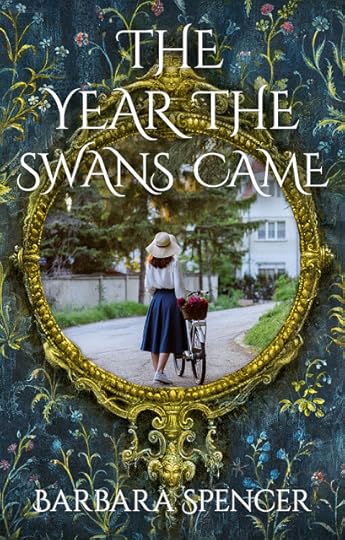
This is the opening which introduces the entire 5-book series –
They set out in the dead of night. Not the witching hour between twelve and one, when ghouls and warlocks roam, but the hour between three and four, when souls depart their bodies and even monsters sleep.The men have not slept. Gathering together early, they have sat out the hours in a low-beamed room lit by rushes and lanterns, supping at pale gold Jenever and beer that smells strongly of hops, in an effort to keep both demons and fear at bay. Another night and their drinking will lead to merriment and song with an accordion ringing out. Tonight, only a dull confused muttering breaks the silent air.Around the hostelry, stinking of poverty and superstition cluster close-knit houses, their streets made not of stone but of water. Women wait too, in dark rooms lit only by candles – no one sleeping. Some are big with child. Others, the young and beautiful and innocent, are held captive, screaming into the implacable faces of the elderly to be let free, to be allowed to run … to warn.Outside, clinging to tiny islands of stone on which houses perch, lurks the detritus of the fishermen; lobster pots and broken nets, oars resting against a wall, small skiffs tied up to the bank or upturned. Boats, their sails neatly furled, await the approach of early dawn before venturing out to sea.Nothing moves in the darkness except fleetingly: a rat scurrying along a gutter pursued by the looming shadow of a cat. Silence falls and with it the sound of death.
Written in the first person, my main character is sixteen-year-old Magrit or Maidy. Had I written a Greek drama, she would have been the narrator, always on stage. Maidy becomes the cornerstone of the events of that summer even though she tries not to be. While this approach may well annoy some young moderns who want her to grab at life – this is how I have tried to write her – someone central to the story yet content to stay in the background.
The old city referred to is of course Amsterdam in Holland, although I never name the it, and the time is summer 1951. There are many, many themes running through the script: love, death, jealousy, selfishness, despair and concern, to name but a few.

And while in strict chronical order Books 1 – 3 should come first, readers and critics insisted, it should be: The Year the Swans Came.’
And the story?
Maidy, a young college student, dreams of becoming a writer. When given a homework assignment, she is challenged by Ruth, her best friend, to write about the disappearance of her brother, Pieter, who Ruth once upon a time dreamt of marrying.
She tells the story of her family and growing up among the ruins of war. Of her beloved Pappy, head of the House of Bader, who have been designing mirrors for beautiful women since the seventeenth century, of Margaret, her mother, whose superstitions dominate the family, and her favourite brother, Pieter, who disappears the night of his sixteenth birthday ... the year swans first visit the city.

The Year the Swans CameBy Barbara Spencer

Ruth and Maidy have been best friends for as long as they can remember. Stunningly beautiful, rich, and wilful, Ruth has always insisted she will marry Pieter, Maidy’s eldest brother, only for him to vanish from their lives late one night.
Is his disappearance linked to the arrival of the swans, feared as cursed and birds of ill-fortune? What will happen when they return six years later, on the morning of Maidy’s sixteenth birthday?
And who exactly is the enigmatic and mysterious Zande?
Follow Ruth and Maidy’s cursed tale of love as they discover what happened to Pieter, how the appearance of Zande will affect the rest of their lives, and just how much destruction Ruth’s beauty can cause.

Pick up your copy ofThe Year The Swans CameAmazon UK • Amazon US • Waterstones
Barbara Spencer

In 1967, Barbara Spencer hi-tailed it to the West Indies to watch cricket, the precursor to a highly colourful career spanning three continents, in which she was caught up in riots, wars, and choosing Miss World. Eventually, she settled in Somerset to bring up a family. In 2010, the publication of Running, her new teenage thriller, has taken Barbara countrywide. Passionate about the importance of books in today's society, Barbara is happiest working with young would-be writers and is frequently invited into schools to talk about creative writing.
Connect with Barbara: Website • Facebook • Twitter.
Published on March 12, 2020 22:00
March 11, 2020
Join #thriller author, Jim Adameit, as he explores the inspiration behind his fabulous book — The Definition of Experience @JimAdameit

An Author’s InspirationBy Jim Adameit
What follows, entitled ‘IMAGINE’, is the introduction of my novel. Not a prologue per se, but important words to set the stage for what story follows. As the saying goes, ‘art imitates life’. Not a truer word spoken in my case. And yes, as is the nature of my own experience, it was indeed a lot of ‘stuff that happened to me, that I wished happened to somebody else’. But that kind of experience DID give me lots to write about. I pray that this introduction provides enough interest for readers to want to find out what comes next. Yes indeed, art DOES imitate life. I hope you read these words and imagine how you’d feel if in the same situation.
IMAGINE…
Imagine you’ve worked in a particular industry for over three decades… over THIRTY years… An especially tough industry. Very competitive, very demanding - and upon occasion just plain abusive - but you came to be an expert in this business.
You also became well respected through the years. You’ve done everything fair and square to advance your career along the way. You’ve never compromised your integrity, or sacrificed anyone else’s career or reputation to advance your own. No one got thrown under the bus by you - or because of you. Sure, you may not have climbed the proverbial corporate ladder like you hoped you might have, but you played by the rules, and you could sleep reasonably well at night knowing you were moral and ethical. You’ve worked full time positions in this industry while earning college degrees in the evenings. You’ve been a good husband and father through the years, but you put your personal life and family on hold when each company asked you to travel out of town, out of state, or out of the country for business… You put your blood, sweat and tears into your work, always keeping the company’s interests and your job’s responsibilities front and center.

And then one day, out of nowhere, you get cut from a company in this industry, through no fault of your own. Not only did you lose your job, but you lost out on the huge six-figure profit-sharing bonus you were all but promised when you joined the company - when you were heavily recruited to join, that is. Bait and switch. You were a pawn, unwitting and unknowing. Of course you didn’t realize it at the time, but you did shortly thereafter. You were used and taken advantage of. Others furthered their careers on YOUR back. Not only did you lose your job, but your career took a direct hit. Perception can be reality to some, and the perception was that you became damaged goods. You weren’t, but that’s what the water-cooler talk said. Business market perception can be cruel like that.

How would you feel? Really, how WOULD you feel? That life’s not fair? It isn’t. That you were used by someone else to further THEIR career? You were. Would you run off with your tail between your legs, and try to carve out some end-of-life career as best you could? Maybe. Imagine you’re over fifty, no – imagine you’re over sixty years old – and you suddenly realize you have many more years behind you, than in front of you. Just imagine it, the sobering thought that it is. Let that thought wash over you and soak in for a few seconds. You see, when you’re young, you don’t think about your mortality much, if at all. Then one day it happens. You begin to notice your joints start to hurt. Your eyes get tired more often. Each day your body and your brain aches from the intense and tiring workload and travel, as it takes its toll on each of us. But you know you still need to work.
You still have some years left before you can retire – whatever that may mean. Would you be upset? Hell yes. Would you be angry? There’d be something wrong with you if you weren’t. Would you want to get even? Sure. NO SERIOUSLY, would you REALLY want to get even? Maybe.
What if you found out that not only were you let go unjustly – for no good reason - but that the company was doing something immoral, unethical and most of all, illegal. How would you feel THEN? Would THAT push you to do something? That’s the question now, isn’t it? When does a person reach that breaking point, where they’re driven to take action of good over evil? It’s not a rhetorical question. Imagine it…

Seriously, what would you do? If that question challenges you to consider how YOU would feel, then read on… Read this story and see if you’d do the same thing that Dan Gamble did. Maybe you wouldn’t. Maybe you lack the balls, self-pride and gumption to be anything else but a victim. Or maybe not? As the saying sort of goes, evil exists in the world when good men do nothing. Maybe you’d embrace the prospects of getting even, and relish the thought of taking down an evil company, just about more than anything else you can think of.
You might NOT be driven to take action and do what Dan did.
But then again, maybe you would?
The Definition of Experience (Dan Gamble, Book 1)By Jim Adameit

One Man’s Stand Against the Corporate Machine
An edgy, racy, action-packed business / financial / technology thriller, about the global industry that manufactures and brings us all our smart phones, laptop computers, cloud servers – and virtually any other electronic products you can think of.
Think this is boring stuff?
In a US$500 billion global market – with careers and that much money at stake?
Think again…
A primer on an industry that most people don’t know exists…A cautionary tale for those people who do…
Excerpt
Denise was, indeed, paid well as a recruiter for Stygian. She made at least twice the money that any other senior recruiter was being paid in the US, her pay-check automatically deposited in her account every two weeks without fail. And with quarterly profit sharing bonuses sent to her on top of that.
And she certainly didn’t want that to stop, so she put up with the pressure from Bud and Archie and made sure she had her cigarettes and kaopectate always nearby on her desk. She was also glad she had a bathroom close by in her home office, in case she had any intestinal outbursts which cigs or gut meds couldn’t halt.
Denise pulled open her bottom left desk drawer and pulled out the bottle of Seagram’s Seven with her left hand. What remained of it, anyway; three quarters of it already consumed during the week.
She reached her right hand over it to grab her coffee cup, an inch of dark brew still inside, now cold. She poured a couple of inches of amber whiskey over the coffee, not caring that she was mixing them together.
They all go to the same place, she thought, as she took a few long gulps and emptied her cup.
Pick up your copy ofThe Definition of ExperienceAmazon UK • Amazon US • Smashwords
Jim Adameit
 Jim Adameit is the author of ‘The Definition of Experience’, his debut thriller novel in this series. Jim is a 30+ year seasoned veteran of the Contract Manufacturing / Electronic Manufacturing Services industry, in which he’s held various senior level global positions, including sales & marketing, contract administration, and project management.
Jim Adameit is the author of ‘The Definition of Experience’, his debut thriller novel in this series. Jim is a 30+ year seasoned veteran of the Contract Manufacturing / Electronic Manufacturing Services industry, in which he’s held various senior level global positions, including sales & marketing, contract administration, and project management. Connect with Jim: Website • Facebook • Twitter.
Published on March 11, 2020 21:00
March 10, 2020
Join Historical Fiction author, Suzy Henderson, as she takes a look at life in Europe during WWII. There is also a chance to check out Suzy's fabulous book — Madame Fiocca @Suzy_Henderson
<!-- /* Font Definitions */ @font-face {font-family:"Cambria Math"; panose-1:2 4 5 3 5 4 6 3 2 4; mso-font-charset:0; mso-generic-font-family:roman; mso-font-pitch:variable; mso-font-signature:-536870145 1107305727 0 0 415 0;} @font-face {font-family:Calibri; panose-1:2 15 5 2 2 2 4 3 2 4; mso-font-charset:0; mso-generic-font-family:swiss; mso-font-pitch:variable; mso-font-signature:-536859905 -1073732485 9 0 511 0;} @font-face {font-family:garamond; panose-1:2 2 4 4 3 3 1 1 8 3; mso-font-charset:0; mso-generic-font-family:roman; mso-font-pitch:variable; mso-font-signature:3 0 0 0 1 0;} /* Style Definitions */ p.MsoNormal, li.MsoNormal, div.MsoNormal {mso-style-name:"Normal\,Normal body"; mso-style-unhide:no; mso-style-qformat:yes; mso-style-parent:""; margin:0cm; margin-bottom:.0001pt; mso-add-space:auto; text-align:justify; line-height:150%; mso-pagination:widow-orphan; font-size:11.0pt; font-family:"garamond",serif; mso-fareast-font-family:Calibri; mso-fareast-theme-font:minor-latin; mso-bidi-font-family:"Times New Roman"; mso-bidi-theme-font:minor-bidi; mso-fareast-language:EN-US;} p.MsoNormalCxSpFirst, li.MsoNormalCxSpFirst, div.MsoNormalCxSpFirst {mso-style-name:"Normal\,Normal bodyCxSpFirst"; mso-style-unhide:no; mso-style-qformat:yes; mso-style-parent:""; mso-style-type:export-only; margin:0cm; margin-bottom:.0001pt; mso-add-space:auto; text-align:justify; line-height:150%; mso-pagination:widow-orphan; font-size:11.0pt; font-family:"garamond",serif; mso-fareast-font-family:Calibri; mso-fareast-theme-font:minor-latin; mso-bidi-font-family:"Times New Roman"; mso-bidi-theme-font:minor-bidi; mso-fareast-language:EN-US;} p.MsoNormalCxSpMiddle, li.MsoNormalCxSpMiddle, div.MsoNormalCxSpMiddle {mso-style-name:"Normal\,Normal bodyCxSpMiddle"; mso-style-unhide:no; mso-style-qformat:yes; mso-style-parent:""; mso-style-type:export-only; margin:0cm; margin-bottom:.0001pt; mso-add-space:auto; text-align:justify; line-height:150%; mso-pagination:widow-orphan; font-size:11.0pt; font-family:"garamond",serif; mso-fareast-font-family:Calibri; mso-fareast-theme-font:minor-latin; mso-bidi-font-family:"Times New Roman"; mso-bidi-theme-font:minor-bidi; mso-fareast-language:EN-US;} p.MsoNormalCxSpLast, li.MsoNormalCxSpLast, div.MsoNormalCxSpLast {mso-style-name:"Normal\,Normal bodyCxSpLast"; mso-style-unhide:no; mso-style-qformat:yes; mso-style-parent:""; mso-style-type:export-only; margin:0cm; margin-bottom:.0001pt; mso-add-space:auto; text-align:justify; line-height:150%; mso-pagination:widow-orphan; font-size:11.0pt; font-family:"garamond",serif; mso-fareast-font-family:Calibri; mso-fareast-theme-font:minor-latin; mso-bidi-font-family:"Times New Roman"; mso-bidi-theme-font:minor-bidi; mso-fareast-language:EN-US;} .MsoChpDefault {mso-style-type:export-only; mso-default-props:yes; font-family:"Calibri",sans-serif; mso-ascii-font-family:Calibri; mso-ascii-theme-font:minor-latin; mso-fareast-font-family:Calibri; mso-fareast-theme-font:minor-latin; mso-hansi-font-family:Calibri; mso-hansi-theme-font:minor-latin; mso-bidi-font-family:"Times New Roman"; mso-bidi-theme-font:minor-bidi; mso-fareast-language:EN-US;} @page WordSection1 {size:595.0pt 842.0pt; margin:72.0pt 72.0pt 72.0pt 72.0pt; mso-header-margin:35.4pt; mso-footer-margin:35.4pt; mso-paper-source:0;} div.WordSection1 {page:WordSection1;} </style></div><div align="center" class="MsoNormalCxSpFirst" style="font-size: 12pt; text-align: center;"><span style="font-family: "times new roman" , serif; font-size: 40pt;"><br /></span></div><div class="separator" style="clear: both; text-align: center;"><a href="https://1.bp.blogspot.com/-Gw8LYRkRe-..." imageanchor="1" style="margin-left: 1em; margin-right: 1em;"><img border="0" data-original-height="512" data-original-width="1024" height="320" src="https://1.bp.blogspot.com/-Gw8LYRkRe-..." width="640" /></a></div><div align="center" class="MsoNormalCxSpFirst" style="font-size: 12pt; text-align: center;"><br /></div><div align="center" class="MsoNormalCxSpFirst" style="font-size: 12pt; text-align: center;"><span style="color: #666666;"><br /></span></div><div align="center" class="MsoNormalCxSpFirst" style="font-size: 12pt; text-align: center;"><span style="color: #666666; font-family: "times new roman" , serif; font-size: 40pt;">Life in Europe during WW2</span></div><div align="center" class="MsoNormalCxSpFirst" style="text-align: center;"><span style="color: #666666;"><br /></span></div><div align="center" class="MsoNormalCxSpMiddle" style="font-size: 12pt; text-align: center;"><span style="font-family: "times new roman" , serif; font-size: 40.0pt; line-height: 150%;"><span style="color: #666666;">By Suzy Henderson</span><o:p></o:p></span></div><div align="center" class="MsoNormalCxSpMiddle" style="font-size: 12pt; line-height: 21pt; text-align: center;"><br /></div><div align="center" class="MsoNormal" style="font-size: 12pt; line-height: 21pt; text-align: center;"><b><span style="color: #222222; font-family: "times new roman" , serif; font-size: 16.0pt;">“<span style="background-attachment: initial; background-clip: initial; background-image: initial; background-origin: initial; background-position: initial; background-repeat: initial; background-size: initial;">Whatever happens, the flame of the French resistance must not be extinguished and will not be extinguished. Tomorrow, as today, I will speak on the radio from London.”<o:p></o:p></span></span></b></div><div class="MsoNormal" style="font-size: 12pt; line-height: 21pt;"><br /></div><div class="MsoNormal" style="font-size: 12pt; line-height: 21pt;"><span style="color: #222222; font-family: "times new roman" , serif; font-size: 16pt;">This was the end of a speech given by General Charles de Gaulle on 18 June 1940, who had recently fled France and the Germans to seek refuge in England. His rousing speech talks of resistance, of which minute sparks would erupt throughout France in the aftermath of the fall of Paris. Often, we think of resistance in WW2, we conjure images of burly Maquisards with rifles slung over their shoulders, and of people in dark clothing and black berets strapping explosives to train tracks or bridges. Resistance took many forms and for many civilians, making a stand in some way was to resist, as we shall see.</span><span style="font-family: "times new roman" , serif; font-size: 16.0pt;"><o:p></o:p></span></div><div align="left" class="MsoNormal" style="font-size: 12pt; line-height: 21pt; text-align: left;"><br /></div><div align="left" class="MsoNormal" style="font-size: 12pt; line-height: 21pt; text-align: left;"><span style="color: #222222; font-family: "times new roman" , serif; font-size: 16.0pt;">Slogans and propaganda played a big part in the Second World War. In Britain, slogans such as "Keep Calm and Carry On" became widespread and despite the bombings and losing loved ones in the war, the British did indeed hold their heads high and carry on. Women also did their best to look nice, which ties in with another popular slogan – "Beauty is your duty". Despite the ration, women discovered ways of making the best out of making do. When stockings became scarce, ladies painted gravy browning on their legs and used beetroot juice for lip colour. The government relied on the radiant smiles of well-groomed ladies on the home front to boost the morale of servicemen.<br /><br />Cosmetics giants picked up the baton too, creating powder puffs shaped like military caps, and the infamous 'Regimental Red' lipstick by Helena Rubinstein. Improvisation was key, with a smoking match a substitute for an eyebrow pencil, soot residue defining the brows. And if a girl was all out of rouge, there was only one option – pinch the cheeks to infuse a rosy glow.<br /><br />In a sense, fashion became a weapon with which to fight the war. The good ladies of Britain, whether serving in some capacity or on the home front were not about to let Hitler see them suffering and downtrodden. The message soon filtered back to Nazi Germany that neither Hitler nor the Luftwaffe could break the British spirit.<br /><br />When the East End of London was first bombed, the King and Queen visited the very next day, and whilst expressing deep concern and sympathy, some public jeered. A short time later, when a bomb fell on Buckingham Palace, the King and Queen visited the East End once more and the people cheered, with many erupting into a rousing rendition of the national anthem. As news of the morale-boosting royal visit reached the Fuhrer himself, Hitler declared Queen Elizabeth to be the most dangerous woman in Europe.<br /><br />Going back to cosmetics, it's no secret that Elizabeth Arden created shades of red lipstick named 'Auxiliary Red' and 'Victory Red'. Wearing red lipstick was seen as glamorous, a way of defining oneself, and the vibrant shade became a leading trend in fashion. Indeed, the SOE heroine, Nancy Wake, looked forward to her personal parachute each month in the Auvergne, France, when London would include a box of goodies marked, 'Personal for Helene'. The package included an Elizabeth Arden red lipstick.<br /><br />When the Germans marched into Paris on June 1940, civilians lined the streets, many with tears streaming down their faces. The reaction was mixed, with some feeling relieved, thinking war was over for them, and the Germans might bring stability and safety to France. Some were indifferent, but many were horrified, fearing the worst. However, war was far from over, and France was subjected to a harsher life than before.<br /><br />Soon a small number turned to resistance work, determined to disrupt and hinder the enemy. In the beginning the flame was slow to burn, but as weeks of an occupying force turned into months, more people dared to defy their captors. And there were many ways in which the people could 'do their bit' for the war effort. Just as in Britain, fashion would become a weapon with which to fight in France.<br /><br />From the moment the Germans brought their wives and girlfriends to France, along with female serving officers, the German women could not resist following the French fashions. This infuriated many French women, and, as sisters-in-arms, they fought back, determined to keep a little of France to themselves. If all they were able to do was cause confusion and irritation, it gave them some control, boosting their spirits if only for a short while.<br /><br />Battle lines were drawn and the women of Paris decided to set their own fashion rules, creating outrageous designs, such as headdresses of vegetables and straw. It was bad enough that Paris was occupied, brought to Nazi rule, but to have the German wives copying Parisian fashion was an insult. The French fought back, prompted the enemy to copy them and cause ridicule.<br /><br />Initially, the south of France was classed as the free zone, but in November 1942, the Germans crossed the line of demarcation, entering the south and troops marched into Marseille. Soon after, their wives and girlfriends arrived. The ladies of Marseille now had to bear the German women encroaching upon their ranks adorned in French clothes, and so, like their fellow Parisians, they set out to create their own rules.<o:p></o:p></span></div><div align="left" class="MsoNormal" style="font-size: 12pt; line-height: 21pt; text-align: left;"><br /></div><div align="left" class="MsoNormal" style="font-size: 12pt; line-height: 21pt; text-align: left;"><span style="color: #222222; font-family: "times new roman" , serif; font-size: 16.0pt;">In her autobiography, Nancy Wake talks about this with immense pride, explaining how the ladies of Marseille took a stand and ceased wearing hats. All too soon the enemy copied the apparent trend, so Nancy and the women of Marseille created further confusion by wearing hats once again, but not just any hats. No, they donned hats with a green feather, an emblem with great significance. The green feather was the symbol for a green bean – les haricots verts, the same name the French used for the Germans. So, by wearing such a hat, the French ladies were indirectly mocking the enemy.<br />Soon, when the German women procured the finest stockings, the French women abandoned theirs, in preference of bare legs. The German women followed suit only to discover the French wearing ugly thick woollen stockings. The Germans conceded at that point and the battle was won. <br /><br />And so, fashion became a weapon for woman to utilise throughout the war. Fashion gave women an option, a choice, when all other avenues seemed hopeless in the face of an occupying force. It was a mere </span><span style="font-family: "times new roman" , serif; font-size: 16.0pt;">flicker of resistance, but a flame nonetheless, and the message was clear. </span><span style="color: #222222; font-family: "times new roman" , serif; font-size: 16.0pt;">Out of desperation, anger, and fear, the flame of resistance grew bright and spread throughout France, throughout Europe, and women did extraordinary things to "Keep Calm and Carry On", ultimately, to survive.</span><span style="font-family: "times new roman" , serif; font-size: 16.0pt;"><o:p></o:p></span></div><div class="MsoNormalCxSpMiddle" style="font-size: 12pt;"><br /></div><div align="center" class="MsoNormal" style="background-color: white; color: #333333; font-family: "Times New Roman", serif; font-size: 12pt; margin: 0cm 0cm 8pt; text-align: center;"><span style="color: #666666; font-family: "times"; font-size: 40pt;"><br /></span></div><div align="center" class="MsoNormal" style="background-color: white; color: #333333; font-family: "Times New Roman", serif; font-size: 12pt; margin: 0cm 0cm 8pt; text-align: center;"><span style="color: #666666; font-family: "times"; font-size: 40pt;">Madame Fiocca</span><span style="font-family: "times new roman" , serif; font-size: 16pt;"><o:p></o:p></span></div><br style="background-color: white; color: #333333; font-family: Arial, Tahoma, Helvetica, FreeSans, sans-serif; font-size: 14.85px;" /><div align="center" class="MsoNormal" style="background-color: white; color: #333333; font-family: "Times New Roman", serif; font-size: 12pt; line-height: 21pt; margin: 0cm 0cm 8pt; text-align: center;"><span style="font-family: "times new roman" , serif;"><o:p><span style="font-size: 16pt;"> </span></o:p></span><span style="color: #666666; font-family: "times"; font-size: 40pt;">By Suzy Henderson</span></div><div align="center" class="MsoNormal" style="background-color: white; color: #333333; font-family: "Times New Roman", serif; font-size: 12pt; line-height: 25pt; margin: 0cm 0cm 0.0001pt; text-align: center;"><br /></div><div class="separator" style="background-color: white; clear: both; color: #333333; font-family: Arial, Tahoma, Helvetica, FreeSans, sans-serif; font-size: 14.85px; text-align: center;"><b><a href="https://1.bp.blogspot.com/-WViawX8klL..." imageanchor="1" style="color: #954f72; margin-left: 1em; margin-right: 1em;"><img border="0" data-original-height="1600" data-original-width="1067" height="640" src="https://1.bp.blogspot.com/-WViawX8klL..." style="border: none; position: relative;" width="424" /></a></b></div><br style="background-color: white; color: #333333; font-family: Arial, Tahoma, Helvetica, FreeSans, sans-serif; font-size: 14.85px;" /><div align="center" class="MsoNormal" style="background-color: white; color: #333333; font-family: "Times New Roman", serif; font-size: 12pt; line-height: 25pt; margin: 0cm 0cm 0.0001pt; text-align: center;"><br /></div><div align="center" class="MsoNormal" style="background-color: white; color: #333333; font-family: "Times New Roman", serif; font-size: 12pt; line-height: 25pt; margin: 0cm 0cm 0.0001pt; text-align: center;"><b><span style="color: #404040; font-family: "times new roman" , serif; font-size: 16pt;">Marseille, September 1939. War is coming.</span></b><b><span style="color: black; font-family: "times new roman" , serif; font-size: 16pt;"><o:p></o:p></span></b></div><div align="center" class="MsoNormal" style="background-color: white; color: #333333; font-family: "Times New Roman", serif; font-size: 12pt; line-height: 25pt; margin: 0cm 0cm 0.0001pt; text-align: center;"><br /></div><div align="center" class="MsoNormal" style="background-color: white; color: #333333; font-family: "Times New Roman", serif; font-size: 12pt; line-height: 25pt; margin: 0cm 0cm 0.0001pt; text-align: center;"><span style="color: #404040; font-family: "times new roman" , serif; font-size: 16pt;">Nancy Wake is a gregarious twenty-seven-year-old about to marry wealthy French industrialist, Henri Fiocca. When Henri is called to the Front to fight, Nancy, determined to help the war effort, travels to Paris to join the Red Cross as an ambulance driver. Every day she witnesses atrocities. When Paris falls, Nancy flees the German oppressors and returns home to Marseille.</span><b><span style="color: black; font-family: "times new roman" , serif; font-size: 16pt;"><o:p></o:p></span></b></div><div class="MsoNormal" style="background-color: white; color: #333333; font-family: "Times New Roman", serif; font-size: 12pt; line-height: 25pt; margin: 0cm 0cm 8pt; text-align: justify;"><br /></div><div align="center" class="MsoNormal" style="background-color: white; color: #333333; font-family: "Times New Roman", serif; font-size: 12pt; line-height: 25pt; margin: 0cm 0cm 0.0001pt; text-align: center;"><span style="color: #404040; font-family: "times new roman" , serif; font-size: 16pt;">France is a nation defeated; its people are in despair. As Nancy recalls the Germans who whipped Jews on the streets of Vienna a few years earlier, she vows to fight for what is right.</span><b><span style="color: black; font-family: "times new roman" , serif; font-size: 16pt;"><o:p></o:p></span></b></div><div class="MsoNormal" style="background-color: white; color: #333333; font-family: "Times New Roman", serif; font-size: 12pt; line-height: 25pt; margin: 0cm 0cm 8pt; text-align: justify;"><br /></div><div align="center" class="MsoNormal" style="background-color: white; color: #333333; font-family: "Times New Roman", serif; font-size: 12pt; line-height: 25pt; margin: 0cm 0cm 0.0001pt; text-align: center;"><span style="color: #404040; font-family: "times new roman" , serif; font-size: 16pt;">A chance encounter with a British officer draws Nancy into the heart of the Garrow escape network, despite Henri’s reservations. Armed with wealth and charm, she convinces Henri that the Germans will never suspect such a woman. But soon she finds herself caught up in a deadly game of espionage.</span><b><span style="color: black; font-family: "times new roman" , serif; font-size: 16pt;"><o:p></o:p></span></b></div><div class="MsoNormal" style="background-color: white; color: #333333; font-family: "Times New Roman", serif; font-size: 12pt; line-height: 25pt; margin: 0cm 0cm 8pt; text-align: justify;"><br /></div><div class="MsoNormal" style="background-color: white; color: #333333; font-family: "Times New Roman", serif; font-size: 12pt; line-height: 25pt; margin: 0cm 0cm 0.0001pt; text-align: center;"><span style="color: #404040; font-family: "times new roman" , serif; font-size: 16pt;">As the iron fist of the enemy tightens, neighbours denounce neighbours. No one can be trusted. When the enemy closes in, Nancy and Henri face an impossible choice. Has she done more harm than good?<o:p></o:p></span></div><div class="MsoNormal" style="background-color: white; color: #333333; font-family: "Times New Roman", serif; font-size: 12pt; line-height: 25pt; margin: 0cm 0cm 0.0001pt;"><div style="text-align: center;"><br /></div><div style="text-align: center;"><span style="color: #666666; font-family: "times" , "times new roman" , serif; font-size: 53.3333px;">Pick up your copy of</span></div><div style="text-align: center;"><span style="color: #666666; font-family: "times" , "times new roman" , serif; font-size: 53.3333px;"><br /></span></div><div style="text-align: center;"><span style="color: #666666; font-family: "times"; font-size: 53.3333px;"><i>Madame Fiocca</i></span></div><div style="text-align: center;"><span style="color: #666666; font-family: "times"; font-size: 53.3333px;"><a href="https://www.amazon.co.uk/gp/product/B... /></a></span></div><div style="text-align: center;"><span style="color: #666666; font-family: "times"; font-size: 53.3333px;"><a href="https://www.amazon.co.uk/gp/product/B... style="text-align: center;"><span style="color: #666666; font-family: "times" , "times new roman" , serif; font-size: 53.3333px;"><br /></span></div></div><br style="background-color: white; color: #333333; font-family: Arial, Tahoma, Helvetica, FreeSans, sans-serif; font-size: 14.85px;" /><br /><br /><div align="center" class="MsoNormal" style="background-color: white; color: #333333; font-family: "Times New Roman", serif; font-size: 12pt; margin: 0cm 0cm 0.0001pt; text-align: center;"><br /></div><div align="center" class="MsoNormal" style="background-color: white; color: #333333; font-family: "Times New Roman", serif; font-size: 12pt; margin: 0cm 0cm 0.0001pt; text-align: center;"><span style="font-size: 40pt;"><span style="color: #666666; font-family: "times" , "times new roman" , serif;">The Beauty Shop<o:p></o:p></span></span></div><div align="center" class="MsoNormal" style="background-color: white; color: #333333; font-family: "Times New Roman", serif; font-size: 12pt; margin: 0cm 0cm 0.0001pt; text-align: center;"><span style="color: #666666; font-family: "times" , "times new roman" , serif;"><br /></span></div><div align="center" class="MsoNormal" style="background-color: white; color: #333333; font-family: "Times New Roman", serif; font-size: 12pt; margin: 0cm 0cm 0.0001pt; text-align: center;"><span style="font-size: 40pt;"><span style="color: #666666; font-family: "times" , "times new roman" , serif;">By Suzy Henderson<o:p></o:p></span></span></div><div align="center" class="MsoNormal" style="background-color: white; color: #333333; font-family: "Times New Roman", serif; font-size: 12pt; margin: 0cm 0cm 0.0001pt; text-align: center;"><span style="font-size: 40pt;"><span style="color: #666666; font-family: "times" , "times new roman" , serif;"><br /></span></span></div><div class="separator" style="background-color: white; clear: both; color: #333333; font-family: Arial, Tahoma, Helvetica, FreeSans, sans-serif; font-size: 14.85px; text-align: center;"><a href="https://1.bp.blogspot.com/-cOog4hENN1..." imageanchor="1" style="color: #954f72; margin-left: 1em; margin-right: 1em;"><img border="0" data-original-height="900" data-original-width="600" height="640" src="https://1.bp.blogspot.com/-cOog4hENN1..." style="border: none; position: relative;" width="424" /></a></div><div align="center" class="MsoNormal" style="background-color: white; color: #333333; font-family: "Times New Roman", serif; font-size: 12pt; line-height: 25pt; margin: 0cm 0cm 0.0001pt; text-align: center;"><br /></div><div align="center" class="MsoNormal" style="background-color: white; color: #333333; font-family: "Times New Roman", serif; font-size: 12pt; line-height: 25pt; margin: 0cm 0cm 0.0001pt; text-align: center;"><span style="font-family: "times" , "times new roman" , serif;"><span style="background-attachment: initial; background-clip: initial; background-image: initial; background-origin: initial; background-position: initial; background-repeat: initial; background-size: initial; font-size: 16pt;">England, 1942. After three years of WWII, Britain is showing the scars. But in this darkest of days, three lives intertwine, changing their destinies and those of many more.</span><span style="font-size: 16pt;"><br /><br /><span style="background-attachment: initial; background-clip: initial; background-image: initial; background-origin: initial; background-position: initial; background-repeat: initial; background-size: initial;">Dr Archibald McIndoe, a New Zealand plastic surgeon with unorthodox methods, is on a mission to treat and rehabilitate badly burned airmen – their bodies and souls. With the camaraderie and support of the Guinea Pig Club, his boys battle to overcome disfigurement, pain, and prejudice to learn to live again.</span><br /><br /><span style="background-attachment: initial; background-clip: initial; background-image: initial; background-origin: initial; background-position: initial; background-repeat: initial; background-size: initial;">John ‘Mac’ Mackenzie of the US Air Force is aware of the odds. He has one chance in five of surviving the war. Flying bombing missions through hell and back, he’s fighting more than the Luftwaffe. Fear and doubt stalk him on the ground and in the air, and he’s torn between his duty and his conscience.<o:p></o:p></span></span></span></div><div align="center" class="MsoNormal" style="background-color: white; color: #333333; font-family: "Times New Roman", serif; font-size: 12pt; line-height: 25pt; margin: 0cm 0cm 0.0001pt; text-align: center;"><span style="font-size: 16pt;"><span style="font-family: "times" , "times new roman" , serif;"><br /><span style="background-attachment: initial; background-clip: initial; background-image: initial; background-origin: initial; background-position: initial; background-repeat: initial; background-size: initial;">Shy, decent and sensible Stella Charlton’s future seems certain until war breaks out. As a new recruit to the WAAF, she meets an American pilot on New Year’s Eve. After just one dance, she falls head over heels for the handsome airman. But when he survives a crash, she realises her own battle has just begun.</span><o:p></o:p></span></span></div><div align="center" class="MsoNormal" style="background-color: white; color: #333333; font-family: "Times New Roman", serif; font-size: 12pt; line-height: 25pt; margin: 0cm 0cm 0.0001pt; text-align: center;"><span style="font-size: 16pt;"><span style="font-family: "times" , "times new roman" , serif;"><br /><i><span style="background-attachment: initial; background-clip: initial; background-image: initial; background-origin: initial; background-position: initial; background-repeat: initial; background-size: initial;">Based on a true story, "The Beauty Shop" is a moving tale of love, compassion, and determination against a backdrop of wartime tragedy.<o:p></o:p></span></i></span></span></div><div align="center" class="MsoNormal" style="background-color: white; color: #333333; font-family: "Times New Roman", serif; font-size: 12pt; margin: 0cm 0cm 0.0001pt; text-align: center;"><br /></div><div align="center" class="MsoNormal" style="background-color: white; color: #333333; font-family: "Times New Roman", serif; font-size: 12pt; margin: 0cm 0cm 0.0001pt; text-align: center;"><span style="background-attachment: initial; background-clip: initial; background-image: initial; background-origin: initial; background-position: initial; background-repeat: initial; background-size: initial; font-size: 40pt;"><span style="color: #666666; font-family: "times" , "times new roman" , serif;"><br /></span></span><span style="background-attachment: initial; background-clip: initial; background-image: initial; background-origin: initial; background-position: initial; background-repeat: initial; background-size: initial; font-size: 40pt;"><span style="color: #666666; font-family: "times" , "times new roman" , serif;">Pick up your copy of<o:p></o:p></span></span></div><div align="center" class="MsoNormal" style="background-color: white; color: #333333; font-family: "Times New Roman", serif; font-size: 12pt; margin: 0cm 0cm 0.0001pt; text-align: center;"><span style="color: #666666; font-family: "times" , "times new roman" , serif;"><br /></span></div><div align="center" class="MsoNormal" style="background-color: white; color: #333333; font-family: "Times New Roman", serif; font-size: 12pt; margin: 0cm 0cm 0.0001pt; text-align: center;"><i><span style="background-attachment: initial; background-clip: initial; background-image: initial; background-origin: initial; background-position: initial; background-repeat: initial; background-size: initial; font-size: 40pt;"><span style="color: #666666; font-family: "times" , "times new roman" , serif;">The Beauty Shop<o:p></o:p></span></span></i></div><div align="center" class="MsoNormal" style="background-color: white; color: #333333; font-family: "Times New Roman", serif; font-size: 12pt; margin: 0cm 0cm 0.0001pt; text-align: center;"><span style="color: #666666; font-family: "times" , "times new roman" , serif;"><br /></span></div><div align="center" class="MsoNormal" style="background-color: white; color: #333333; font-family: "Times New Roman", serif; font-size: 12pt; margin: 0cm 0cm 0.0001pt; text-align: center;"><span style="background-attachment: initial; background-clip: initial; background-image: initial; background-origin: initial; background-position: initial; background-repeat: initial; background-size: initial; font-size: 40pt;"><span style="color: #666666; font-family: "times" , "times new roman" , serif;"><a href="http://mybook.to/TheBeautyShop" style="color: #954f72;">Amazon</a><o:p></o:p></span></span></div><div class="MsoNormal" style="background-color: white; color: #333333; font-family: "Times New Roman", serif; font-size: 12pt; margin: 0cm 0cm 0.0001pt;"><br /></div><div class="MsoNormal" style="background-color: white; color: #333333; font-family: "Times New Roman", serif; font-size: 12pt; margin: 0cm 0cm 0.0001pt;"><span style="font-size: 30pt;"><span style="color: #666666; font-family: "times" , "times new roman" , serif;"><br /></span></span><span style="font-size: 30pt;"><span style="color: #666666; font-family: "times" , "times new roman" , serif;"><br /></span></span></div><div class="MsoNormal" style="background-color: white; color: #333333; font-family: "Times New Roman", serif; font-size: 12pt; margin: 0cm 0cm 0.0001pt;"><span style="font-size: 30pt;"><span style="color: #666666; font-family: "times" , "times new roman" , serif;">Suzy Henderson<span style="background-attachment: initial; background-clip: initial; background-image: initial; background-origin: initial; background-position: initial; background-repeat: initial; background-size: initial;"><o:p></o:p></span></span></span></div><div class="MsoNormal" style="background-color: white; color: #333333; font-family: "Times New Roman", serif; font-size: 12pt; margin: 0cm 0cm 0.0001pt;"><span style="font-size: 30pt;"><span style="font-family: "times" , "times new roman" , serif;"><br /></span></span></div><div class="separator" style="background-color: white; clear: both; color: #333333; font-family: Arial, Tahoma, Helvetica, FreeSans, sans-serif; font-size: 14.85px; text-align: center;"><a href="https://1.bp.blogspot.com/-SlfFuuLlgV..." imageanchor="1" style="clear: left; color: #954f72; float: left; margin-bottom: 1em; margin-right: 1em;"><img border="0" data-original-height="1200" data-original-width="1600" height="240" src="https://1.bp.blogspot.com/-SlfFuuLlgV..." style="border: none; position: relative;" width="320" /></a></div><div class="MsoNormal" style="background-color: white; line-height: 25pt; margin: 0cm 0cm 0.0001pt;"><div class="MsoNormal" style="line-height: 25pt; margin: 0cm 0cm 0.0001pt;"><div class="MsoNormal" style="color: #333333; font-family: "Times New Roman", serif; font-size: 12pt; line-height: 25pt; text-align: start;"><span style="font-size: 16pt;"><span style="font-family: "times" , "times new roman" , serif;">Suzy Henderson lives with her husband and two sons in Cumbria, England, on the edge of the Lake District, a beautiful and inspiring landscape of mountains, fells, and lakes. She never set out to be a writer, although she has always loved reading and experiencing the joy of being swept away to different times and places.<o:p></o:p></span></span></div><div class="MsoNormal" style="color: #333333; font-family: "Times New Roman", serif; font-size: 12pt; line-height: 25pt; text-align: start;"><span style="font-size: 16pt;"><span style="font-family: "times" , "times new roman" , serif;"><br /></span></span></div><div class="MsoNormal" style="color: #333333; font-family: "Times New Roman", serif; font-size: 12pt; line-height: 25pt; text-align: start;"><span style="font-size: 16pt;"><span style="font-family: "times" , "times new roman" , serif;">In a previous life she was a Midwife but now works from home as a freelance writer and novelist. While researching her family history, Suzy became fascinated with both World War periods and developed an obsession with military and aviation history. Following the completion of her Open University Degree in English Literature and Creative Writing, she began to write and write until one day she had a novel.<o:p></o:p></span></span></div><div class="MsoNormal" style="color: #333333; font-family: "Times New Roman", serif; font-size: 12pt; line-height: 25pt; text-align: right;"><span style="font-size: 16pt;"><span style="font-family: "times" , "times new roman" , serif;"><br /></span></span></div><div class="MsoNormal" style="color: #333333; font-family: "Times New Roman", serif; font-size: 12pt; line-height: 25pt; text-align: start;"><span style="font-size: 16pt;"><span style="font-family: "times" , "times new roman" , serif;">Other interests include music, old movies, and photography – especially if WW2 aircraft are on the radar. Suzy writes contemporary and historical fiction and is a member of the Historical Novel<o:p></o:p></span></span></div><div class="MsoNormal" style="color: #333333; font-family: "Times New Roman", serif; font-size: 12pt; line-height: 25pt; text-align: start;"><span style="font-size: 16pt;"><span style="font-family: "times" , "times new roman" , serif;"><br /></span></span></div><div class="MsoNormal" style="color: #333333; font-family: "Times New Roman", serif; font-size: 12pt; line-height: 25pt; text-align: start;"><span style="font-size: 16pt;"><span style="font-family: "times" , "times new roman" , serif;">Society and the Alliance of Independent Authors. Her debut novel, <a href="https://www.amazon.co.uk/BEAUTY-SHOP-..." style="color: #954f72;" target="_blank"><i><span style="color: blue;">The Beauty Shop</span></i></a><i>, </i>has been awarded the <a href="https://www.bragmedallion.com/" style="color: #954f72;" target="_blank"><span style="color: blue;">B.R.A.G. Medallion.</span></a><u><span style="color: blue;"> </span></u><o:p></o:p></span></span></div><div class="MsoNormal" style="color: #333333; font-family: "Times New Roman", serif; font-size: 12pt; line-height: 25pt; text-align: right;"><span style="font-size: 16pt;"><u><span style="color: blue;"><span style="font-family: "times" , "times new roman" , serif;"><br /></span></span></u></span></div><div class="MsoNormal" style="color: #333333; font-family: "Times New Roman", serif; font-size: 12pt; line-height: 25pt; text-align: center;"><span style="font-family: "times" , "times new roman" , serif;"><span style="font-size: 16pt;">You can discover more about Suzy here: </span><a href="https://suzyhendersonauthor.com/" style="color: #954f72; font-size: 16pt;">Website</a><span style="font-size: 16pt;"> • </span><a href="https://lowfellwritersplace.blogspot...." style="color: #954f72; font-size: 16pt;">Blog</a><span style="font-size: 16pt;"> • </span><a href="https://www.goodreads.com/author/show..." style="color: #954f72; font-size: 16pt;">Goodreads</a><span style="font-size: 16pt;"> • </span><a href="https://www.facebook.com/SuzyHenderso..." style="color: #954f72; font-size: 16pt;">Facebook</a><span style="font-size: 16pt;"> • </span><a href="https://twitter.com/Suzy_Henderson" style="color: #954f72; font-size: 16pt;">Twitter.</a></span></div><div class="MsoNormal" style="color: #333333; font-family: "Times New Roman", serif; font-size: 12pt; line-height: 25pt; text-align: center;"><br /></div><div class="MsoNormal" style="color: #333333; font-family: "Times New Roman", serif; font-size: 12pt; line-height: 25pt; text-align: center;"><br /></div><div class="MsoNormal" style="color: #333333; font-family: "Times New Roman", serif; font-size: 12pt; line-height: 25pt; text-align: center;"><br /></div><div class="MsoNormal" style="color: #333333; font-family: "Times New Roman", serif; font-size: 12pt; line-height: 25pt; text-align: center;"><br /></div></div></div>
Published on March 10, 2020 22:00
#BookReview — Northern Wolf (Northern Wolf #1) by Daniel Greene #HistoricalFiction #AmericanCivilWar
Published on March 10, 2020 21:00
March 9, 2020
A Conversation with #HistoricalFiction author, Richard Foreman #Interview @RForemanAuthor

A Conversation with Historical Fiction author, Richard Foreman
Please give a warm Coffee Pot welcome to Richard Foreman.
MA: I am so glad you could drop by for a chat today. Before we begin, could you please tell my readers a little about yourself.
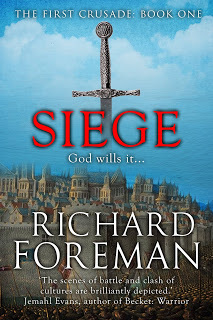 RF: My name is Richard Foreman. I’m a publicist turned author and publisher. During my days as a publicist I was fortunate enough to work with several historians and historical novelists – Simon Sebag Montefiore, Kate Williams and Tim Butcher - arranging articles, launch parties and book talks. My days are spent reading and writing. In regards to reading, I run Sharpe Books, one of the UK’s leading independent publishers. We publish both established and new authors – specialising in historical fiction and crime/thrillers. As well as reading submissions, I sometimes act as a judge on competition panels. In relation to my writing, I am the author of various bestselling novels, covering different eras and genres – including Augustus: Son of Rome, Raffles: The Complete Inningsand Warsaw, set during WW2. My latest book is Siege, the opening instalment of a planned trilogy about the First Crusade. The novel covers an epochal moment in European and Middle Eastern history, blending fact with fiction, action with religion. I am always interested in hearing from people so do get in touch, whether you are a reader or author, should you have read one of my titles and wish to publish something similar.
RF: My name is Richard Foreman. I’m a publicist turned author and publisher. During my days as a publicist I was fortunate enough to work with several historians and historical novelists – Simon Sebag Montefiore, Kate Williams and Tim Butcher - arranging articles, launch parties and book talks. My days are spent reading and writing. In regards to reading, I run Sharpe Books, one of the UK’s leading independent publishers. We publish both established and new authors – specialising in historical fiction and crime/thrillers. As well as reading submissions, I sometimes act as a judge on competition panels. In relation to my writing, I am the author of various bestselling novels, covering different eras and genres – including Augustus: Son of Rome, Raffles: The Complete Inningsand Warsaw, set during WW2. My latest book is Siege, the opening instalment of a planned trilogy about the First Crusade. The novel covers an epochal moment in European and Middle Eastern history, blending fact with fiction, action with religion. I am always interested in hearing from people so do get in touch, whether you are a reader or author, should you have read one of my titles and wish to publish something similar.MA: I thought we would keep the questions light-hearted today. If you could live anywhere in the world, where would it be?
RF: I live in London – and have done all my life. I’ve been able to travel a fair bit over the years, for business and pleasure. I couldn’t live in New York – but I I could Boston, in the US. As much as I write about Ancient Rome I prefer the other City of Seven Hills, Lisbon. I think I would still live in London, for the most part, given the choice. But I’m not averse to having holiday homes in the countryside and somewhere sunny, however, with a swimming pool. I just need a nearby bookshop, pub and cinema – and most importantly my dog would need to live with me.
MA: What would you consider to be your greatest strength?
RF: To know that I have plenty of weaknesses.
MA: Great answer! Fine dining or a picnic?
RF: Fine dining. I regularly arrange dinners with author friends, who know how to put an outfit and sentence together. The copious amounts of wine we drink help us laugh at each other and ourselves. We share ideas and contacts – and are duly supportive of people with new books out. Am equally happy at a Michelin Star restaurant or local curry house.
MA: Last question. What makes you angry?
RF: Rudeness. Good manners cost nothing - but are priceless.
MA: Thank you so much for dropping by today.
If you would like to learn more about Richard's books then you know what to do... SCROLL DOWN!
SiegeBy Richard Foreman

1098.The crusader army still stands outside Antioch. Starving. Deserting.An enemy force, led by Kerbogha of Mosul, is days away from relieving the walled city.Bohemond of Taranto calls upon the English knight, Edward Kemp, to meet with an agent, who is willing to provide the Norman prince with access to Antioch.But Bohemond is not alone in wishing to capture and lay claim to the prize. Edward must contend with enemies in his own camp.Should the knight's mission fail, then so may the entire campaign.Antioch must fall.Recommended for fans of Bernard Cornwell, Michael Jecks and Conn Iggulden.
'The scenes of battle and clash of cultures are brilliantly depicted.' Jemahl Evans, author of Becket: Warrior
Siege is the first book in a new series, set during the First Crusade, by bestselling historical novelist Richard Foreman.
Pick up your copy ofSiegeAmazon UK • Amazon US
Read for FREE with

Richard Foreman
Richard Foreman is a bestselling historical novelist. He is the author of multiple series set in Ancient Rome, including Sword of Rome, Sword of Empire, Spies of Rome and the Augustus saga. He has also written books set in the medieval period, Band of Brothers, and WW2 – Warsaw and A Hero of Our Time. His books have regularly broken through into the top 100 of Amazon and have been widely praised. His new book is Siege, the first in a series of novels set during the First Crusade.
For many years Richard worked as a publicist and literary consultant for numerous bestselling authors, including Simon Sebag-Montefiore, Kate Williams and William Dalrymple. During his time as a publicist Richard founded the London History Festival. He has also served as a judge for the HWA Crowns.
Richard is the CEO of Sharpe Books, one of the leading UK independent publishers. Sharpe Books specialises in publishing crime/thrillers, historical fiction and history books. Authors on their list include Michael Jecks, Sarah Gristwood, Saul David and Peter Tonkin. As well as publishing established writers, Sharpe Books accepts submissions from new authors too. Please see sharpebooks.com should you wish to get in touch and see their submission requirements.
Praise for Richard Foreman's Books
Spies of Rome
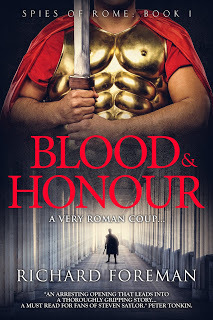 "A masterful and evocative depiction of a fledgling imperial Rome fraught with intrigue and at war with itself. The story and characters are as striking as the graffiti that adorns the violent city’s walls during Augustus' rise."Steven Veerapen, author of The Abbey Close."An arresting opening that leads into a thoroughly gripping story. Impressive research and understanding of the period allows Richard Foreman to move so seamlessly and effectively from historical epic to historical detective thriller. A must read for fans of Steven Saylor." Peter Tonkin, author of The Ides.
"A masterful and evocative depiction of a fledgling imperial Rome fraught with intrigue and at war with itself. The story and characters are as striking as the graffiti that adorns the violent city’s walls during Augustus' rise."Steven Veerapen, author of The Abbey Close."An arresting opening that leads into a thoroughly gripping story. Impressive research and understanding of the period allows Richard Foreman to move so seamlessly and effectively from historical epic to historical detective thriller. A must read for fans of Steven Saylor." Peter Tonkin, author of The Ides.
Amazon
Augustus: Son of Rome
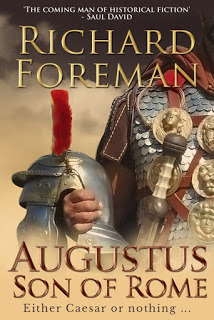
'Augustus: Son of Rome forges action and adventure with politics and philosophy. This superb story is drenched in both blood and wisdom - and puts Foreman on the map as the coming man of historical fiction’.Saul David, Author of the Zulu Hart series.
Amazon
Raffles:
The Complete Innings

‘Classy, humorous and surprisingly touching tales of cricket, friendship and crime.’David Blackburn, The Spectator.
Amazon
Band of Brothers:The Complete Campaigns
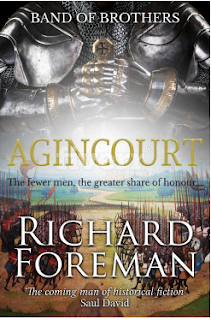 'Escapism at its best... A great read that tells much about the style of war and how the individuals fought.'Michael Jecks.'A rattling good yarn, requiring only the minimum of suspension of belief, and leaves one eagerly anticipating the next instalment of the adventures of the team as they accompany the King to Harfleur.' Major Gordon Corrigan, author of A Great and Glorious Adventure: A Military History of the Hundred Years War.
'Escapism at its best... A great read that tells much about the style of war and how the individuals fought.'Michael Jecks.'A rattling good yarn, requiring only the minimum of suspension of belief, and leaves one eagerly anticipating the next instalment of the adventures of the team as they accompany the King to Harfleur.' Major Gordon Corrigan, author of A Great and Glorious Adventure: A Military History of the Hundred Years War.Amazon
Warsaw
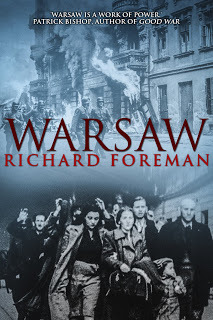
"Warsaw is a work of power. It has the authentic feeling that pulses from an important book. The meticulous research and psychological insights light up one of the most ghastly episodes in the history of man's inhumanity to man."Patrick Bishop, author of Fighter Boys and A Good War.
Amazon
Published on March 09, 2020 22:00
#BookReview — Torn Asunder by Renny deGoot #HistoricalFiction #Ireland @renny_degroot

Torn AsunderBy Renny deGroot
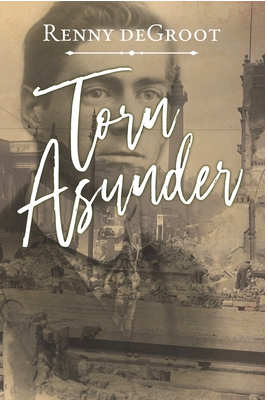
He is an inspiring journalist, but Emmet Ryan has no idea that his words have the power to destroy those he loves the most. This is a story about a conflicted man, opening in Dublin, 1916 and set during one of Ireland’s most turbulent eras.

"Ireland should belong to the Irish."
Was that such a difficult concept to understand? It seemed rather simple to the men in the Ryan family. Emmet Ryan was determined to follow in the footsteps of his father and his elder brothers and join the Fingal Volunteers despite what his mother might say on the subject. He was sixteen, he was a man, and he was determined to be a part of Éirí Amach na Cásca, The Easter Rising. Even after the subsequent internment of the Fingal Volunteers, Emmet felt that The Cause was worth the danger, worth the sacrifice. It was way past the time for Ireland to become an independent republic free from British rule.
However, there was more than one way to win a war. Emmet was clever, quick. He could do more damage with a pen and paper than he could with a gun. And although being a journalist did not seem quite as glamorous as the war his brother, Kevin, and his best friend, Liam, fought, it was still incredibly important.
Emmet loved Ireland. He was of Ireland. Ireland was in his blood. The Cause justified the means. But then on one auspicious evening down the pub, Liam pointed out a young woman whose red hair cascaded in waves down her back, and Emmet would soon find himself wondering — if he had to choose between The Cause and those he loved, which would he choose?
From the fanciful patriotic excitement of a sixteen-year-old boy on the eve of the 1916 Easter Rising to the 1943 Commemoration of the Rising at the Broadway Cinema, Torn Asunder by Renny deGroot is the story of one young man as he navigates life, love, family, and the Irish Republican Army (IRA).
With an enthralling narrative that left my heart pounding in fearful anticipation for the protagonists and a story that is as compelling as it is powerful, Torn Asunder is a fabulous work of fiction set during an extraordinary violent time in Irish history. Through deGroot's carefully crafted prose, I felt as if I had been transported back in time to the early 20th Century and was witnessing the events that led up to the Irish Civil War and beyond.
Not only does deGroot tell the story of Emmet Ryan with an impressive sweep and brilliance, but she also has a novelist’s understanding of what makes history worth reading. This novel is tautly gripping, so much so that I found it near on impossible to put down. This is the kind of book that demands your attention and certainly commands your respect.
The historical detailing of this book has to be commended. deGroot depicts this period in history with a confidence that can only be gained by many long hours of research. Reading this book was effortless, I am sure the hours of research that went into it was not, but it has certainly paid off. There is an authority in deGroot's writing, an assurance that deGroot knows what she is talking about. Torn Asunder is a truly gripping account of family, war, and to an extent, historical controversy. And what a story it is.
The story is told, for the most part, from Emmet Ryan's perspective. Emmet is an unlikely hero. He is swept up in the patriotic fever that gripped the nation and his family. He is determined to do his bit for The Cause, but he realises very quickly that he might not be suited to a soldier's life. Emmet is an intellect. He is uncommonly good with words, which makes him the ideal commentator, the voice behind the speeches. His press pass also means he has access to places that others cannot enter. Emmet is, however, a very honourable man, and he wants to be both a patriot and a husband. His passion for The Cause never leaves, despite the many things that happen in this book. His dismay at the Anglo-Irish Treaty and in particular the fact that Ireland was split between the Irish Free State and Northern Ireland was a bitter pill for him to swallow, as it was for many. He is steadfast in his beliefs, and despite life getting in the way of The Cause, he does remain a loyal disciple. I thought Emmet's depiction was brilliant. He believes in what he is fighting for wholeheartedly, and yet he is also rational enough to know when to take a step back.
Another character who becomes more prevalent in the second half of this book is Emmet's daughter, Maeve. Maeve grew up with stories of the Easter Rising and the subsequent Civil War, and although Emmet told his tales because he wants his children to be proud of their heritage, Maeve takes the stories to heart a little more than what Emmet had expected. Maeve is a young woman who knows her own mind but is heavily influenced by her father and her Uncle Liam. However, neither men want Maeve to become involved with the IRA, it is too dangerous. I adored Maeve. She is this wonderful woman who is determined to do her bit, however small, to help her country. Her relationship with Daniel, a young English man, is also incredibly sweet — it is full of starlight and first kisses. This is a young heroine that takes up her father's story and The Cause with determination, but she is also wise enough to know, as her father was, when to walk away.
There are, as you would expect, some historical figures in this book — from Sir Roger Casement to Michael Collins, and although many of these names are mentioned only in passing, they still, especially in Collins' case, unwittingly drive the narrative in this story.
Torn Asunder by Renny deGroot is a fabulous novel that not only captured my attention but kept it throughout. It is immensely readable and absolutely irresistible. When historical fiction is written in such a way, then there is no such thing as too much.
I Highly Recommend.
Review by Mary Anne Yarde.The Coffee Pot Book Club.
Pick up your copy ofTorn AsunderAmazon UK • Amazon US
Renny DeGroot
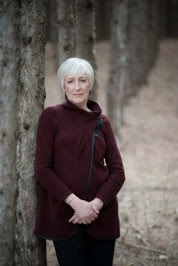 I am a first generation Canadian of Dutch parents. I was born in Nova Scotia, Canada but grew up in Toronto, Canada. I studied English Literature at Trent University and creative writing at Ryerson University.I am a published poet, short-story author and an active member of SOCAN (Society of Composers, Authors and Music Publishers of Canada), having written the lyrics for a song which has now been recorded twice.
I am a first generation Canadian of Dutch parents. I was born in Nova Scotia, Canada but grew up in Toronto, Canada. I studied English Literature at Trent University and creative writing at Ryerson University.I am a published poet, short-story author and an active member of SOCAN (Society of Composers, Authors and Music Publishers of Canada), having written the lyrics for a song which has now been recorded twice.My debut novel, Family Business, was shortlisted for the Kobo Emerging Writer Prize, 2015. My strong Dutch roots continue to influence me while the love of my Canadian homeland with its beauty and freedom, flavours all that I do.I live in rural Ontario with my Great Pyrenees and Chocolate Lab.
Connect with Renny: Website • Facebook • Twitter.
Published on March 09, 2020 21:30
#HistoricalFantasy author, Barbara Spencer, is talking about the inspiration behind her fabulous book — The Year The Swans Came #mustread #Fantasy @BarbaraSpencerO

An Author’s InspirationBy Barbara Spencer
Why did you become an author?That question has me floundering, the reasons too numerous to set down on paper. Perhaps, it was a return to some sort of normalcy in the UK – which I found deadly boring – after years living and working in different continents. But write what? Fiction, non-fiction, romance, historical. I dabbled with ghost stories and then popped a toe into historical fiction. This was a fictionalised story about Admiral Sir Samuel Hood, whose epitaph in the form of a carved-stone obelisk, rises over Butleigh, in Somerset. The novel in two volumes was described as, ‘beautifully written’ by those to whom I sent the first draft, and suitable both for YA’s and adults. Sadly it never got finished; there was just too many Hoods, all of whom it would seem possessed first names of either Samuel or Alexander, although there was an Arthur but he was only a purser. (Incidentally, did you know the word hoodwinked comes from Alexander Hood, Sam’s uncle. In the meantime, a series of unsettling relationships drove me away from adult romance and so, the safe option was to write for children.
That’s when my alter ego, Barbara Spencer took to the stage and after my first books, Scruffy and A Fishy Tail, which was set in Barbados,were published, I embarked on books for the 8 – 12 age group and then embarked on mystery thrillers for teens.
I might well have continued along that path had I not read, Girl with a Pearl Earring by Tracy Chevalier and decided I had to write a book – a real book – an adult book.
After that, a whole series of pointers drove me to Amsterdam, a city I had first visited in the 1960s, when it was a quiet sleepy place bursting with flowers, cake shops and charm.
 Amsterdam.
Amsterdam.Now I saw it as a possible background for a novel. But not yet. I’m not one of those amazing authors who diligently take a notebook with them when they leave the house, making notes and writing descriptions of scenery. I’m one of those who wake up in the morning and say ... that sounds interesting. And then I brood over the idea for a while. In the case of Running, my teenage thriller, it was three years, the final piece of the jigsaw – a motorcycle – not slotting into place until 2009.
And it was not until 2010, on a visit to Amsterdam with my granddaughter, that I stumbled upon the legend of Leda and the Swan. I was not alone in my interest; artists of all persuasions have been intrigued by the legend of Zeus, who comes down to earth disguised as a swan, even Michael Angelo, and in the many museums of Amsterdam hang these glorious paintings.
In her review of The Year the Swans Came, Catherine Kullmann, the novelist, refers to an unnamed country and the unnamed invaders.
This was a deliberate ploy on my part, wanting only to drop clues. If you need to blame someone, blame Daphne du Maurier, who I read and read, whilst writing my time-slip novel, Time Breaking. In the novel Rebecca, although du Maurier names the county, she is more than cagey when it comes to her heroine.
So, wanting to create more mystery, I simply loaded the novel with clues, setting the house where the Bader family live overlooking a river, with cobblestone alleys, bridges and canals, and referring to the neighbours as Meneer and Mevrouw, the Dutch equivalent of Mr and Mrs.
Nevertheless, this created a furore among my readers and become a talking point. Because it’s possible to change an E-book, that has been done, and I have admitted the novel is set in Holland.
And, yes, the unnamed invaders are the Germans.
I am told they came at dawn. People stayed in their homes with their curtains drawn, yet still the sound of marching feet ransacked the silence, unending, unendurable, day after day, until even the sun ran away and hid behind the dark clouds of war. And in the dead of night, people ran away too. Deserting homes that had given them shelter through storm and tempest, to place their trust in a rickety old barge or sailing yacht that had never slipped its mooring in twenty years, praying it would carry them to safety. And in the early dawn, when the boots began thudding across the cobbles, hundreds of houses were left with their front doors open, almost as a gesture of welcome
Strangely, it was a biopic about the film actress Audrey Hepburn that originally focused my attention on the plight of the Dutch during the Occupation; and of course, the terrible tragedy that befell the Jews. And in 2010, when my granddaughter and I visited and did the museums, the canals, and the Anne Frank House, I knew that had to form the background to my story.
And it does, Ruth, Maidy’s best friend, is Jewish. Can you have an anti-heroine?
Bizarrely, it was the burgeoning eBook market in which I wanted to participate that proved the final decider, since 99% of my book sales of children’s and YA novels are in paperback.

Oh, and I forgot. I changed my style of writing too:
Growing up amongst the ruins of war, four siblings use the bridges and cobblestone walkways of the old city as a backdrop for their games. Pieter Bader, the eldest, wants to follow in the footsteps of his family, designers of mirrors for royalty since the 17th century, while Maidy, the youngest, dreams of becoming a writer. Around the smallest bridge in the city, she weaves stories of swashbuckling pirates and princesses, who wear sandals made from the silken thread of a spider web. Her best friend Ruth lives next door. She dreams of marrying Pieter, only for him to vanish from their lives late one night.
Is his disappearance linked to the arrival of the swans, feared as cursed and birds of ill-fortune? What will happen when they return six years later, on the morning of Maidy’s sixteenth birthday?
And who exactly is the charismatic and mysterious Zande?
Follow Ruth and Maidy’s cursed tale of love as they discover what happened to Pieter, and how the appearance of Zande will affect both their lives, unleashing events as tragic and fantastical as one of Maidy’s stories.
Nevertheless, it was another few years before the first draft of The Year the Swans Camewas completed, and encouraged by Felicity Bryan, the agent, I began the series Children of Zeus, intending for it to be published first.
That hasn’t happened either because of the secret that hides among the pages of The Year the Swans Came:
‘Secret?’I felt the words ticking away inside my head like an unexploded bomb, ‘One that involves you all.’ Zande got to his feet in one graceful move. ‘Oh, that secret.’ ‘You don’t play fair, Zande,’ I burst out. ‘Why would I possibly change the habit of a lifetime and play fair?’ I watched his face; grim, his eyes hooded.‘Because we’re friends.’ ‘So be satisfied with that.’
The Year the Swans CameBy Barbara Spencer

Ruth and Maidy have been best friends for as long as they can remember. Stunningly beautiful, rich, and wilful, Ruth has always insisted she will marry Pieter, Maidy’s eldest brother, only for him to vanish from their lives late one night.
Is his disappearance linked to the arrival of the swans, feared as cursed and birds of ill-fortune? What will happen when they return six years later, on the morning of Maidy’s sixteenth birthday?
And who exactly is the enigmatic and mysterious Zande?
Follow Ruth and Maidy’s cursed tale of love as they discover what happened to Pieter, how the appearance of Zande will affect the rest of their lives, and just how much destruction Ruth’s beauty can cause.

Pick up your copy ofThe Year The Swans CameAmazon UK • Amazon US • Waterstones
Barbara Spencer

In 1967, Barbara Spencer hi-tailed it to the West Indies to watch cricket, the precursor to a highly colourful career spanning three continents, in which she was caught up in riots, wars, and choosing Miss World. Eventually, she settled in Somerset to bring up a family. In 2010, the publication of Running, her new teenage thriller, has taken Barbara countrywide. Passionate about the importance of books in today's society, Barbara is happiest working with young would-be writers and is frequently invited into schools to talk about creative writing.
Connect with Barbara: Website • Facebook • Twitter.
Published on March 09, 2020 21:00
March 8, 2020
#HistoricalRomance author, Catherine Meyrick is taking a look at Witchcraft Trials in Early Modern England. There is also a chance to check out Catherine's fabulous book —The Bridled Tongue. @cameyrick1
 \Witchcraft Trials in Early Modern EnglandBy Catherine Meyrick
\Witchcraft Trials in Early Modern EnglandBy Catherine Meyrick‘The early-modern European witch-hunts were neither orchestrated massacres nor spontaneous pogroms. Alleged witches were not rounded up at night and summarily killed extra-judicially or lynched as the victims of mob justice. They were executed after trial and conviction with full legal process.’ Gregory J DurstonCrimen exceptum (2019) p.14
Across Europe, from the fifteenth through to the eighteenth century, thousands of people, women mainly, were tried and often executed for witchcraft. The treatment of accusations varied from place to place depending on the local legal process, even within the British Isles. England had around 500 executions over the period covered by the Witchcraft Acts while in Scotland more than 1,500 of those accused were executed; Wales and Ireland had few cases as personal setbacks were more often ascribed to fairies or the little people than to witches.Prior to the first English witchcraft Act of 1542, most cases of witchcraft and sorcery were dealt with by ecclesiastical courts; such cases were infrequent and punishments were usually penances. Occasionally serious cases did occur such as that of Margery Jourdemayne, tried for treasonable witchcraft in 1441. She felt the full weight of the secular court and was burnt at the stake, the usual punishment for women convicted of treason. Burning was reserved for the crimes of heresy and, for women, for both high and petty treason (the murder of either a husband, or a master or mistress).

The 1542 Act defined witchcraft as a felony, a crime punishable by death at the first offence and forfeiture of goods and chattels. Few, if any, were prosecuted under this Act which was repealed in 1547. It was replaced in 1563 by An Act Against Conjurations, Enchantments and Witchcrafts which prescribed the death penalty for invoking evil spirits or using witchcraft to bring about death. A first offence of using witchcraft to otherwise harm people or property, to find treasure or lost or stolen items, or to provoke a person to unlawful love earnt a year’s imprisonment and six hours in the pillory on market day four times in that year. Second offences could receive the death penalty. The 1604 Act against Conjuration, Witchcraft and Dealing with Evil and Wicked Spirits extended the death penalty to those using witchcraft to harm people in any way as well as introducing it for the new crimes of covenanting with evil spirits and taking up the dead from graves for use in witchcraft.Accusations of witchcraft often arose from ‘misfortune following anger’—an old woman reputed to be a witch requested charity of a neighbour, the neighbour refused, the old woman became angry and threatened the neighbour. Not long after the neighbour, a family member or even some of their livestock fell inexplicably ill or suffered some other misfortune. Cause and effect were clear.The legal process began when the person believing him or herself to be the victim of witchcraft took their complaint to a Justice of the Peace(JP). Other neighbours then came forward with more complaints, some years old. The accused was brought before the JP who examined both accused and witnesses and recorded their statements. The accused was strongly encouraged to confess.After taking the depositions, the JP decided whether the case should be dismissed or the accused should be indicted and committed to gaol or, in rare occasions, bailed. Depending on the timing of the accusation and indictment, those accused could spend months in gaol awaiting trial, some dying before trial as a result of the harsh conditions and the spread of typhus.Various tests developed over the period to determine if the accused was, in fact, a witch. Apart from a witch’s confession or identification by another known witch, the inability to say the Lord’s Prayer without mistake, or to only be able to say it in Latin, were considered strong proofs. Respectable women, often midwives, were brought in to search the accused for a mark or growth anywhere upon her body that could be considered to be an extra teat used to suckle her familiar spirits. These familiars were small creatures such as cats, rats, dogs, ferrets, birds, frogs and toads believed to assist a witch in her magic. Depending on the zeal of the women searching, even conditions such as haemorrhoids might be considered a teat. A common test throughout the whole period of the operation of the witchcraft Acts was scratching. A person afflicted by a witch’s magic scratched the suspected witch and drew blood; if this brought relief, the woman scratched was obviously a witch. Witches were also believed to have a place, or mark, on their bodies that was insensitive and did not bleed when pricked with a needle. Witch pricking was common in Scotland but appears not to have been used in England until the reign of James I. Swimming involved throwing an accused witch into a body of water in the belief that if she sank she was innocent, if she floated it was proof she was a witch. With origins in the disused trial by ordeal, swimming was not used in witchcraft cases in sixteenth century England but reappeared in the seventeenth with the first reported incidence at Northampton in 1612.

Those accused of capital witchcraft were usually tried at the Assizes. Once the Assizes opened, a Grand Jury was called comprising persons of higher social standing and education than those who sat as petty jurors in the trial itself. The Grand Jury received the bills of indictment and examined prosecution witnesses for each case to determine whether there were sufficient grounds to put the accused on trial. If the majority considered the evidence sufficient, the case went to trial.The accused was brought into court manacled. Despite having, under pressure, confessed her guilt to the JP, most accused witches pleaded not guilty at trial. The examinations taken by the JP were read out in court and evidence heard from the victim, if living, or a member of the victim’s family. Others, including the JP and the women involved in the search for the witch’s teat, provided supporting evidence. The accused rarely called her own witnesses, and was usually unrepresented. The progress of the case involved disputation between the accused and the accuser and witnesses. Hearsay was permitted and judges were interventionist, asking questions and involving themselves to a degree that would be considered improper today.Records no longer exist for all counties but in the period 1570-1609 at the Assizes of the Home Circuit 24% of witchcraft accusations resulted in execution, a similar rate to other capital crimes. Only 44% of those accused of witchcraft are recorded as having suffered punishment of any sort. The conviction rate for witchcraft offences actually declined under the 1604 Act, possibly due to the higher level of proof required. The glaring exception was the activities of Matthew Hopkins, the self-styled Witchfinder General, and John Stearne freelancing in East Anglia during the upheaval of the Civil War.Those found guilty of causing death by witchcraft were hanged, the same penalty as for murder by any other means, unless that murder was high or petty treason where the penalty was burning. The body of the executed ‘witch’ was then buried in unconsecrated ground. A fortunate few were granted a special royal pardon. During her reign Elizabeth I granted thirty-six pardons to people convicted of witchcraft.In 1736 the 1604 witchcraft Act was repealed but, though the more educated sections of society no longer believed in witches and their ability to do harm, witchcraft beliefs lingered with attempts at swimming occurring as late as the second half of the nineteenth century. Today, even in my sunny corner of the world, some still believe that harm can be done by supernatural means. Notices are regularly placed in local newspapers by those ‘skilled’ at removing the evil eye and curses. Fortunately, the law no longer concerns itself with such matters.______________________________________________Images: Court of Wards by an unidentified painter. Public domain via Wikimedia CommonsTitle page of Witches Apprehended, Examined, and Executed... (1613) showing a witch being swum. Wellcome Collection Attribution 4.0 International (CC BY 4.0)
The Bridled Tongue
By Catherine Meyrick
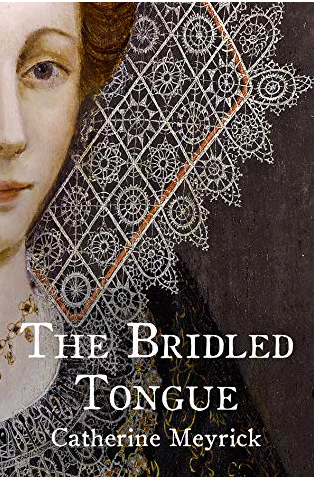
England 1586
Death and life are in the power of the tongue.
Alyce Bradley has few choices when her father decides it is time she marry as many refuse to see her as other than the girl she once was—unruly, outspoken and close to her grandmother, a woman suspected of witchcraft.
Thomas Granville, an ambitious privateer, inspires fierce loyalty in those close to him and hatred in those he has crossed. Beyond a large dowry, he is seeking a virtuous and dutiful wife. Neither he nor Alyce expect more from marriage than mutual courtesy and respect.
As the King of Spain launches his great armada and England braces for invasion, Alyce must confront closer dangers from both her own and Thomas’s past, threats that could not only destroy her hopes of love and happiness but her life. And Thomas is powerless to help.

Pick up your copy of
The Bridled TongueAmazon UK • Amazon US
Catherine Meyrick
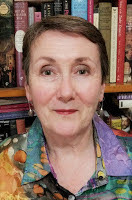 Catherine Meyrick is a writer of historical fiction with a particular love of Elizabethan England. Her stories weave fictional characters into the gaps within the historical record—tales of ordinary people who are very much men and women of their time, yet in so many ways like us today.Although she grew up in regional Victoria, Australia, Catherine has lived all her adult life in Melbourne where she works as a librarian. She has a Master of Arts in history and is also a family history obsessive.Catherine’s first novel,
Forsaking All Other
, was the 2018 Gold Medal winner of The Coffee Pot Book Club Historical Romance Book of the Year. She has recently released a second novel, also set in the 16th century England.
The Bridled Tongue
, this time set against the threat of immanent invasion by the Spanish in 1588. It touches on issues such as arranged marriages, sibling rivalry and jealousy, the dangers of gossip, and the ways the past can reach out and affect the present. The Bridled Tongue is a Coffee Pot Book Club recommended read.
Catherine Meyrick is a writer of historical fiction with a particular love of Elizabethan England. Her stories weave fictional characters into the gaps within the historical record—tales of ordinary people who are very much men and women of their time, yet in so many ways like us today.Although she grew up in regional Victoria, Australia, Catherine has lived all her adult life in Melbourne where she works as a librarian. She has a Master of Arts in history and is also a family history obsessive.Catherine’s first novel,
Forsaking All Other
, was the 2018 Gold Medal winner of The Coffee Pot Book Club Historical Romance Book of the Year. She has recently released a second novel, also set in the 16th century England.
The Bridled Tongue
, this time set against the threat of immanent invasion by the Spanish in 1588. It touches on issues such as arranged marriages, sibling rivalry and jealousy, the dangers of gossip, and the ways the past can reach out and affect the present. The Bridled Tongue is a Coffee Pot Book Club recommended read.
Published on March 08, 2020 22:00
The Coffee Pot Book Club
The Coffee Pot Book Club (formally Myths, Legends, Books, and Coffee Pots) was founded in 2015. Our goal was to create a platform that would help Historical Fiction, Historical Romance and Historical
The Coffee Pot Book Club (formally Myths, Legends, Books, and Coffee Pots) was founded in 2015. Our goal was to create a platform that would help Historical Fiction, Historical Romance and Historical Fantasy authors promote their books and find that sometimes elusive audience. The Coffee Pot Book Club soon became the place for readers to meet new authors (both traditionally published and independently) and discover their fabulous books.
...more
...more
- Mary Anne Yarde's profile
- 159 followers



